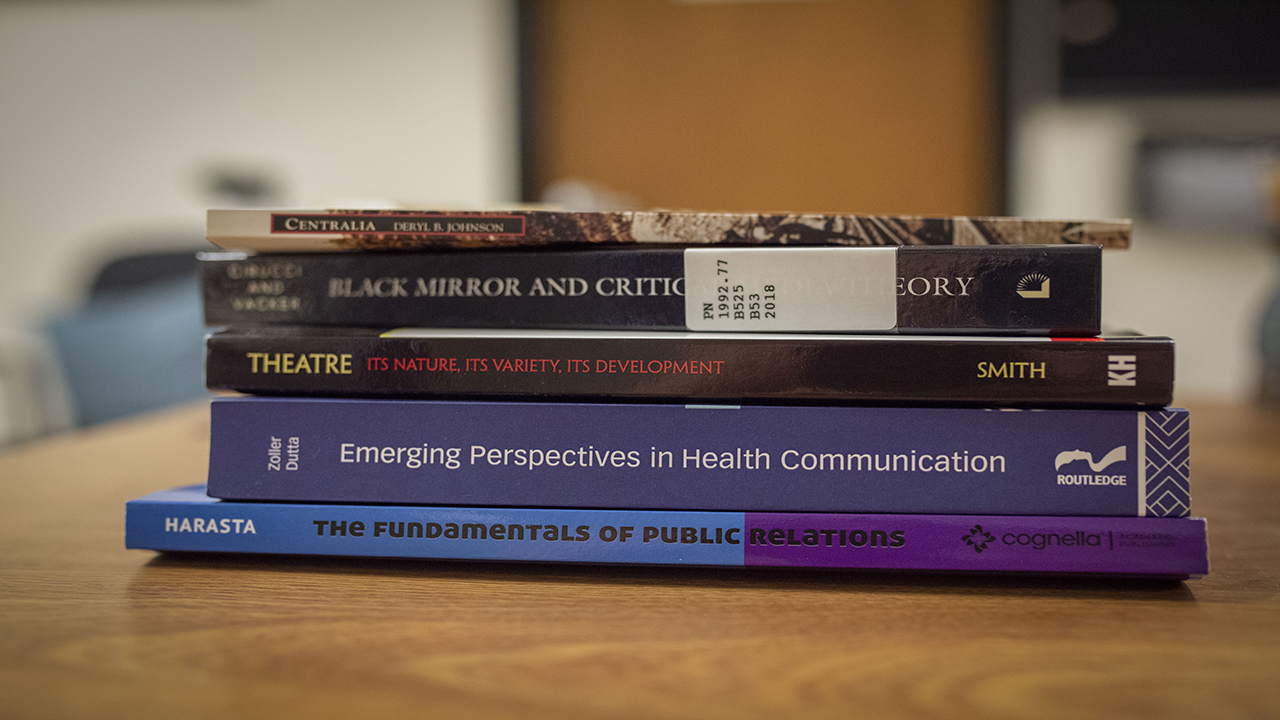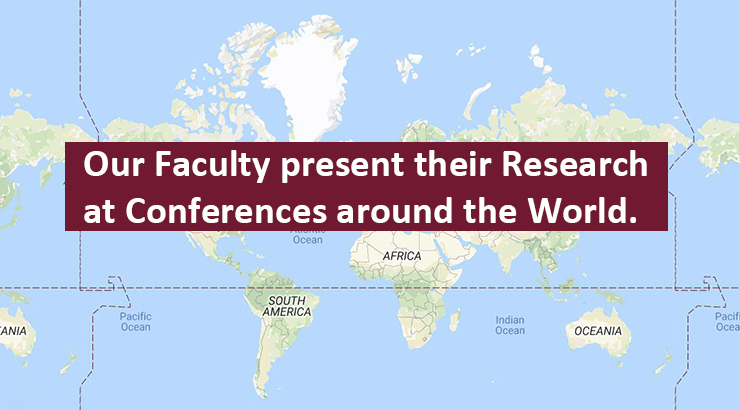Areas of Communication Studies

Recognizing the importance of human communication in both professional and personal lives, Communication Studies majors explore communication and develop skills in a variety of contexts. We live in a complex and rapidly changing world where those knowledgeable of and skilled in communication within families, corporations, and cultures will be most successful in their personal, professional, and civic lives.
Interpersonal communication
Interpersonal Communication involves the study of the dynamics of family, friends, romances, lifestyles, and cultures, and shows how communication defines and shapes these interactions. It also studies how we can explore who we are and strive to understand how we as individuals fit in the larger society. Interpersonal Communication looks at how cultures and communities create and share meaning through words, customs, and dress as well as how communication is the common denominator that brings people together through various means to bring about social change and help people understand each other.
-
Courses in Interpersonal Communication
- COM/WGS 130: Introduction to Interpersonal Communication
- COM 215: Small Group Communication
- COM/WGS 248: Nonverbal Communication
- COM 261: Introduction to Health Communication
- COM/WGS 285: Gender Communication
- COM 343: Social Games & Communication
- COM 345: Relational Communication
- COM/WGS 387: Family Communication
-
Representative Publications from Faculty in Interpersonal Communication
- Robinson, J. A. (2017). Exploring Attribution Theory and Bias. Communication Teacher, 31 (209-213).
- Ebersole, D. S., & Hernandez, R. A. (2016). “Taking Good Care of Our Health”: Parent-Adolescent Perceptions of Boundary Management About Health Information. Communication Quarterly, 64, 5, 573-595.
Media Studies
Media Studies focuses on both traditional media (newspapers, film, and television) and new media (social media, the internet, and video games). Such technologies have reshaped romantic and interpersonal relationships, forms of labor in the workforce, accessibility to information and knowledge, types of entertainment available, and individual identity formation. In Media Studies, students learn how traditional media shape and frame events, encourage
-
Courses in Media Studies
- COM 212: Introduction to Mass Communication
- COM 224: Social Media Ethics
- COM 245: New Media and Communication
- COM 305: Theories of Emerging and Social Media
- COM 307: The Rhetoric of Visual Media
- COM 314: Social Media Analytics
- COM 315: International Communication
- COM 360: The Digital Self
-
Representative Publications from Faculty in Media Studies
- Cirucci, A. (2018). Black Mirror and Critical Media Theory. Lanham: Lexington Books
- Pruchniewska, U. M. (2017). Branding the self as an "authentic feminist". Negotiating feminist values in post-feminist digital cultural production. Feminist Media Studies, 18(5). 810-824.
- Massie, K. (2014). Communication connections: From
Aristotle to the internet. Dubuque, IA: Kendall Hunt
Performance Studies
Performance Studies explores the use of performance as a means of studying literary and oral texts, understanding culture, and communicating ideas. Students learn how to translate literature and other texts from the page to the stage through their use of literary analysis, characterization, staging, and vocal and physical expression. Performance Studies students are interested in performing in a variety of contexts
Faculty in Performance Studies have interests in personal narrative and ethnography, performing literature, readers theatre, performance and social activism, performance and sexualities, illness narratives, and feminist performance.
-
Courses in Performance Studies
- COM 201: Storytelling
- COM 216: Performance of Literature
- COM/MUS 217: Music of Poetry
- COM 220: Group Performance
- COM 226: Advanced Solo Performance
- COM/WGS 237: Women Writers in Performance
- COM 271: Sexualities & Communication
- COM/WGS 285: Gender Communication
-
Representative Publications from Faculty in Performance Studies
- Weckerle, L. (2014). Breaking Bad and Blending Boundaries: Revisioning the Myths of Masculinity and the Superhero. In D. Whitt & J. Perlich (Eds.), Myth in the Modern World: Essays on Intersections with Ideology and Culture (7-32).
- Smith, R. (2014). Theatre: Its Nature, Its Variety, Its Development. Kendall Hunt Publishing
- Johnson, D. B. (2004). Centralia. Charleston, S.C: Arcadia Pub.
Rhetoric & Civic Engagement
Rhetoric & Civic Engagement is the basis for the field of Communication Studies. It refers to the study of how communication works, with special attention to the art and science of persuasion. Why do certain messages catch fire and change the world? Why do certain messages "stick" in our memories? Why do people react strongly to some messages, but then completely ignore others? Rhetorical theory and criticism explore these questions through the analysis of texts ranging from political speeches to music lyrics to online communication. In addition, Rhetoric & Civic Engagement includes teaching students how to use the tools of language, structure, and delivery to improve their written and oral communication.
Public Speaking, a component of Rhetoric & Civic Engagement, is a vital skill necessary for success in professional jobs, personal relationships, and civic and community participation. Effective public speaking means being able to express yourself clearly and adapt to your audience in a variety of contexts. COM 010, Fundamentals of Oral Communication, the
-
Courses in Rhetoric & Civic Engagement
- COM 105: Business and Professional Presentation
- COM 205: Argumentation & Debate
- COM 210: Persuasion
- COM/WRI 212: Introduction to Mass Communication
- COM 214: Advanced Public Speaking
- COM 215: Small Group Communication
- COM 227: Rhetorical Theory and Criticism
- COM 245: New Media and Communication
- COM 310: The Rhetoric of Citizenship
- COM 321: Popular Culture
-
Courses in Public Speaking
- COM 105: Presentational Speaking
- COM 205: Argumentation and Debate
- COM 214: Advanced Public Speaking
-
Representative Publications from Faculty in Rhetoric and Civic Engagement
- Goidel, K., Gaddie, K., & Ehrl, M. (2017). Watching the News and Support for Democracy: Why Media Systems Matter. Social Science Quarterly, 98(3), 836-855.
Strategic Communication
Strategic communication incorporates all of an organization's communication efforts into the single, focused purpose of furthering its reputation and brand. In doing so, organizations using strategic communication improve their image among their key publics much more effectively and efficiently than through the previous, fragmented communication efforts of the past. The primary benefit of strategic communication is that the practice improves sponsorships, profits, political support, employee satisfaction, as well as overall patronage of the organization by its many, and often fragmented,
-
Courses in Strategic Communication
- COM 170: Introduction to Public Relations
- COM 215: Small Group Communication
- COM 219: Integrated Marketing Communication Concepts and Practices
- COM 235: Public Relations Cases and Campaigns
- COM 241: Public Relations Processes and Techniques
- COM 261: Introduction to Health Communication
- COM 274: Organization Communication
- COM 311: Crisis Communication
- COM 314: Integrated Marketing
- COM/WGS 350: Leadership Communication
- COM 375: Communication Training and Development
-
Representative Publications from Faculty in Strategic Communication
- Cripe, E. T. (2018). "Scarlet C": Exploring Caesarean Section Stigma. Health Communication, 33(6), 782-785.
- Dewine,
S. , Eicholtz, M. M. and White‐Mills, K. (2017). Training and Development. In The International Encyclopedia of Organizational Communication (eds C. R. Scott, J. R. Barker, T. Kuhn, J. Keyton, P. K. Turner and L. K. Lewis) - Harasta, J. (2014). Jersey strong, right?: A communications analysis of New Jersey's post-Hurricane Sandy tourism recovery. Case Studies in Strategic Communication, 3, article 4.

Faculty Conference Map
Our faculty advance the discipline of communication in the areas of interpersonal communication, media studies, rhetoric & advocacy, performance studies, and strategic communication.
Explore our Faculty Conference Map







